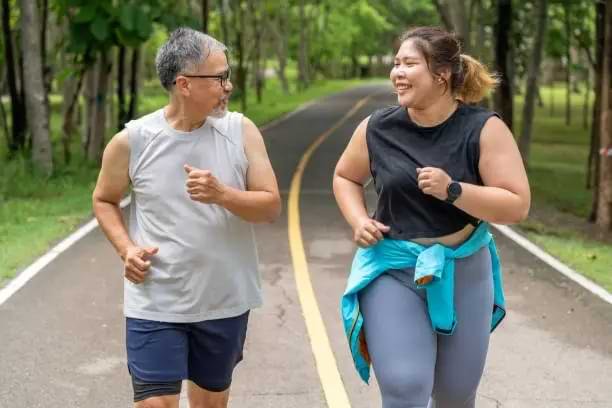As we age, staying active becomes more crucial than ever. Regular exercise not only keeps us physically fit but also boosts our mental well-being, improves mood, and increases life expectancy. This guide is tailored for individuals over 50, offering comprehensive insights and practical advice to help you embark on or continue your fitness journey with confidence and safety.
Assessing Your Fitness Level
Evaluating Your Physical Condition
Before beginning any new fitness regimen, it’s important to assess your current fitness level. This can be done through simple self-assessment tests or by consulting with a healthcare professional. Understanding your starting point will help you set realistic goals and choose the most appropriate and safe exercises.
Importance of Consulting with a Healthcare Provider
It’s advisable to speak with a healthcare provider, especially if you have pre-existing health conditions. They can offer guidance tailored to your health needs and ensure that your fitness plan aligns safely with your medical requirements.
Setting Realistic Fitness Goals
Tips for Setting Achievable Goals
Setting achievable goals is fundamental to maintaining motivation and measuring progress. Start with small, manageable objectives, like walking for 15 minutes a day, and gradually increase the intensity and duration of your workouts.
Examples of Short and Long-Term Fitness Objectives
Short-term goals might include walking a certain number of steps daily or attending a yoga class twice a week. Long-term goals could be to complete a 5K walk or improve flexibility and balance significantly within six months.
Low-Impact Exercises for Beginners
Introduction to Low-Impact Exercises
Low-impact exercises are ideal for beginners, especially those over 50, as they involve movements that put less strain on the body and joints. Examples include swimming, cycling, and walking.
Top Exercises to Get Started
Walking is one of the best low-impact exercises, along with stationary cycling and water aerobics. These activities help improve cardiovascular health without overwhelming your body.

Strength Training for Enhancing Muscle Tone and Bone Density
Safe Practices for Strength Training
Strength training is essential for maintaining muscle tone and bone density as you age. Use light weights or resistance bands, and focus on proper form to prevent injuries.
Effective Strength Exercises for Seniors
Simple exercises like squats, wall push-ups, and seated resistance band exercises are effective and safe for older adults.
Cardiovascular Exercises to Boost Heart Health
Easy Cardio Exercises for Everyday
Incorporate easy cardio exercises into your daily routine, such as brisk walking, dancing, or using a stationary bike.
How to Safely Increase Heart Rate
Gradually increase your exercise duration and intensity while monitoring your heart rate to ensure you’re working within a safe range.
Flexibility and Balance
Yoga and Stretching Routines
Yoga and stretching are crucial for maintaining flexibility and range of motion. Engage in gentle yoga classes designed for seniors or follow simple home stretching routines.
Exercises to Improve Balance and Prevent Falls
Balance exercises, such as standing on one foot or walking heel-to-toe, are important to reduce the risk of falls and improve body coordination.
Nutrition and Hydration
Nutritional Needs for Active Seniors
Active seniors require a balanced diet rich in fruits, vegetables, lean proteins, and whole grains. Consider consulting a nutritionist to tailor your diet to your fitness needs.
Importance of Staying Hydrated During Exercise
Hydration is crucial, especially during exercise. Drink water before, during, and after physical activity to keep your body well-hydrated and functioning optimally.
Integrating Mindfulness and Mental Wellness
Mental Benefits of Regular Exercise
Regular physical activity can greatly improve your mental health, reducing symptoms of depression and anxiety and enhancing overall mood.
Simple Mindfulness Exercises for Relaxation
Incorporate mindfulness practices like deep breathing or meditation into your routine to enhance mental clarity and relaxation.
Leveraging Technology for Fitness
Using Apps and Trackers to Monitor Progress
Use fitness trackers and apps to monitor your progress and stay motivated. These tools can help you keep track of your steps, heart rate, and calories burned, providing insights into your health improvements.
Finding the Right Gadgets for Your Fitness Journey
Choose gadgets that are user-friendly and meet your specific fitness needs, whether it’s a basic pedometer or a more advanced fitness watch.
Outdoor Activities and Adventures
Safe and Enjoyable Outdoor Activities
Engage in outdoor activities that you enjoy, such as hiking, gardening, or golf. These activities not only provide good exercise but also connect you with nature and fresh air.
Preparing for Different Environments
When planning outdoor activities, consider the weather and terrain. Wear appropriate clothing and footwear, and always carry water and sunscreen.
Adapting to Physical Limitations
Modifications for Common Health Issues
If you have health issues like arthritis or limited mobility, modify exercises as needed. For instance, perform seated exercises or use low-impact machines that reduce stress on your joints.
Working Out with Arthritis or Mobility Limitations
Focus on exercises that strengthen the muscles around your joints but do not cause pain. Water aerobics, for example, can be ideal for those with arthritis.
Staying Motivated and Overcoming Plateaus
Strategies to Keep Fitness Exciting
Vary your exercises, set new challenges, and try group classes to keep your fitness routine exciting and engaging.
How to Adapt Routines to Continue Progress
As your fitness improves, adapt your routines to maintain progress. Increase the intensity of your workouts or try new activities to continue challenging your body.
Conclusion
Staying active over 50 is crucial for maintaining health and independence. By setting realistic goals, engaging in a mix of exercises, and paying attention to nutrition and hydration, you can enjoy a full, vibrant, and active life. Remember, it’s never too late to start your fitness journey and make significant improvements in your quality of life. Stay motivated, stay active, and most importantly, stay healthy!



